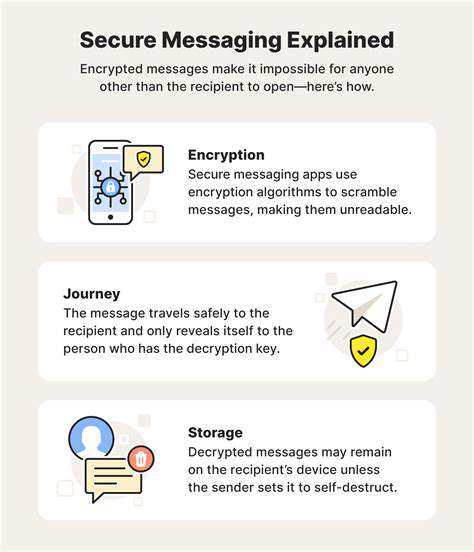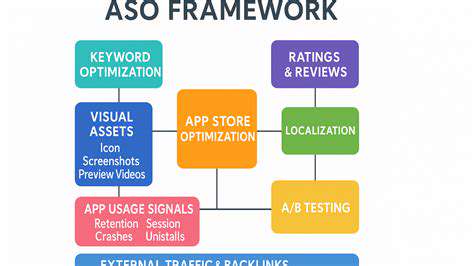Protecting Your Home Network from Cyber Threats
Securing Your Wi-Fi Network
Understanding Wi-Fi Security Risks
Protecting your home Wi-Fi network from cyber threats is crucial in today's interconnected world. Malicious actors can exploit vulnerabilities in unsecured networks to gain unauthorized access to your devices and sensitive data. This includes everything from stealing personal information to potentially controlling your smart home devices, making it essential to implement robust security measures.
Common risks include eavesdropping on your internet traffic, unauthorized access to your network resources, and even the potential for malware infections spreading from compromised devices. Understanding these risks is the first step in taking proactive steps to protect your network.
Choosing a Strong Wi-Fi Password
A strong Wi-Fi password is a fundamental defense against unauthorized access. Avoid using easily guessable passwords like password123 or your pet's name. Instead, create a unique password that combines uppercase and lowercase letters, numbers, and symbols. The longer the password, the better, ideally exceeding 12 characters for maximum security.
Enabling Wi-Fi Encryption (WPA3/WPA2)
Enabling Wi-Fi encryption, such as WPA3 or WPA2, is a critical security measure. These protocols encrypt data transmitted over your Wi-Fi network, making it virtually impossible for intruders to intercept your communications. Ensure your router is configured with the latest encryption standard to safeguard your data from potential eavesdroppers.
Regularly Updating Router Firmware
Outdated router firmware can contain security vulnerabilities that hackers can exploit. Regularly updating your router's firmware is essential to patch these vulnerabilities and keep your network protected. Check your router's manufacturer website for the latest firmware updates and follow the instructions carefully for a smooth update process. This proactive step significantly strengthens your network's defenses.
Using a Virtual Private Network (VPN)
A VPN (Virtual Private Network) can add an extra layer of security to your home network by encrypting your internet traffic. This is particularly beneficial when connecting to public Wi-Fi networks, where your data is more vulnerable to interception. Using a VPN ensures that your online activities remain private and secure, even when using potentially less secure connections.
Monitoring Network Activity and Devices
Keeping an eye on your network activity and connected devices is vital for detecting any suspicious behavior. Utilize your router's built-in tools or dedicated network monitoring software to identify unusual traffic patterns or unauthorized devices attempting to connect. Promptly addressing any anomalies can prevent potential security breaches and protect your network's integrity.
Implementing Multi-Layered Security Solutions
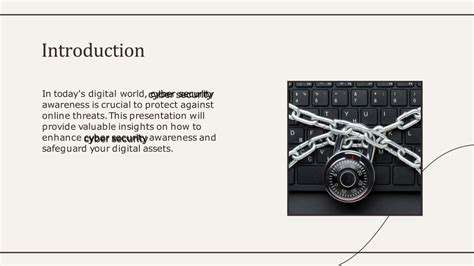
Implementing a Robust First Layer of Security
A robust initial security layer is crucial for safeguarding sensitive data and preventing unauthorized access. This often involves implementing strong authentication mechanisms, such as multi-factor authentication (MFA), which adds an extra layer of verification beyond a simple username and password. Implementing MFA significantly reduces the risk of account compromise by requiring users to provide additional verification, such as a code sent to their mobile phone. Moreover, the use of strong, unique passwords for each account is paramount. These passwords should be complex and difficult to guess, incorporating a combination of uppercase and lowercase letters, numbers, and symbols.
Furthermore, regular security audits and vulnerability assessments are essential. These proactive measures help identify potential weaknesses in the system before malicious actors can exploit them. Regularly updating software and operating systems is vital for patching known security vulnerabilities. The implementation of robust security policies, including acceptable use policies and data handling procedures, should be a core component of the first layer of security.
Enhancing Security Through Network Segmentation
Network segmentation isolates different parts of a network, limiting the impact of a security breach. By dividing the network into smaller, more manageable segments, organizations can contain any potential attack and prevent it from spreading throughout the entire network. This approach significantly reduces the attack surface and improves overall network security.
Employing Advanced Encryption Techniques
Implementing strong encryption protocols, such as Transport Layer Security (TLS) and Secure Sockets Layer (SSL), is vital for protecting sensitive data during transmission. These protocols encrypt data in transit, ensuring that only authorized parties can access it. This is particularly important for protecting sensitive data exchanged between users and web applications. Using industry-standard encryption algorithms, like AES-256, is crucial for safeguarding the confidentiality and integrity of data.
Data at rest must also be encrypted. This means encrypting data stored on servers, databases, and other storage devices. This crucial step prevents unauthorized access if a system is compromised. This approach ensures that even if an attacker gains access to the storage, they cannot decrypt the data without the proper decryption key.
Implementing Intrusion Detection and Prevention Systems
Intrusion Detection Systems (IDS) and Intrusion Prevention Systems (IPS) are crucial for monitoring network traffic and identifying potential threats. IDS systems passively monitor network traffic for malicious activity, while IPS systems actively block or mitigate threats. These systems provide an early warning system to detect and respond to security incidents, allowing organizations to take swift action to contain and remediate vulnerabilities.
Developing a Comprehensive Security Awareness Program
A robust security posture relies heavily on human factors. Employee training and awareness programs play a significant role in preventing security breaches. Regular training sessions should cover topics such as phishing scams, social engineering tactics, and safe password practices. Empowering employees with the knowledge and skills to recognize and report potential security threats is essential. This proactive approach empowers employees to be vigilant and responsible security guardians within the organization. Establishing a clear incident response plan is also critical to ensure that the organization is prepared to deal with security incidents effectively.
Staying Informed and Proactive in Network Security

Staying Current with Industry Trends
Staying informed about the latest developments in your industry is crucial for success. This involves actively seeking out new information through various channels, including industry publications, conferences, and online resources. By understanding emerging trends and technologies, you can anticipate potential challenges and identify opportunities that may arise. This proactive approach allows you to adapt your strategies and maintain a competitive edge in the marketplace. Regularly reviewing industry reports and attending relevant workshops can significantly enhance your knowledge base and equip you to make informed decisions.
Keeping up with industry news and best practices is paramount. Following thought leaders and influencers in your field can provide valuable insights. They often share valuable perspectives and practical advice that can help you improve your approach to problem-solving and achieving your goals. By remaining engaged with the dynamic world of your industry, you can better understand the ever-evolving landscape and make more effective, strategic decisions.
Developing a Proactive Mindset
A proactive mindset fosters a culture of anticipation and preparedness. It involves anticipating potential challenges and taking steps to address them before they become major issues. This proactive approach empowers you to seize opportunities and navigate obstacles more effectively. By being prepared and responsive, you can demonstrate resilience and adaptability in a constantly changing environment. This approach also helps you to anticipate future needs and adjust your strategies accordingly.
Developing a proactive mindset encourages you to take initiative and seek out solutions rather than simply reacting to problems. This approach not only strengthens your problem-solving skills but also fosters a sense of ownership and responsibility. Being proactive fosters a sense of control and confidence, allowing you to navigate complexities with greater ease.
Building Strong Networks and Relationships
Cultivating strong professional networks and relationships is essential for staying informed and proactive. Connecting with colleagues, mentors, and industry experts can open doors to new opportunities and perspectives. These connections provide valuable insights and support, allowing you to expand your knowledge base and stay ahead of the curve. Networking events and online communities provide avenues for building these crucial relationships.
Engaging with industry peers allows you to share experiences, learn from their successes and failures, and gain a broader understanding of the challenges and opportunities within your field. Building these relationships is not only beneficial for personal growth but also for professional advancement. It can lead to collaboration opportunities, knowledge sharing, and the exchange of valuable ideas.
Prioritizing Continuous Learning and Skill Development
Prioritizing continuous learning and skill development is paramount for staying informed and proactive in today's dynamic environment. This includes staying current with emerging technologies, adapting to changing industry standards, and enhancing your skillset to meet the demands of the future. Continuously seeking out new knowledge and refining your abilities will allow you to adapt and excel in an ever-evolving landscape. Enhancing your knowledge and skills not only strengthens your professional competence but also boosts your career prospects.
Investing in professional development activities, such as workshops, seminars, and online courses, can significantly enhance your capabilities and broaden your understanding. By committing to lifelong learning, you demonstrate a dedication to growth and improvement. This proactive approach empowers you to stay ahead of the curve and embrace new opportunities that arise. It demonstrates a commitment to staying relevant and valuable in your chosen profession.
Read more about Protecting Your Home Network from Cyber Threats
Hot Recommendations
- Review: The New [Specific Brand] Smart Lock Is It Secure?
- Best Budget Studio Monitors for Music Production
- Top Flight Simulation Peripherals (Joysticks, Throttles, etc.)
- Top Portable Scanners for Document Management On the Go
- Reviewing the Latest Smart Air Purifiers for Your Home
- Best Portable Photo Printers for Travelers and Memory Keepers
- The Future of Personal Transportation Beyond Cars (Hyperloop, eVTOL)
- Top Network Monitoring Tools [Free & Paid Options]
- Understanding the Tech Behind mRNA Vaccines [A Look Inside]
- Guide to Choosing the Right Gaming Chair for Ergonomics
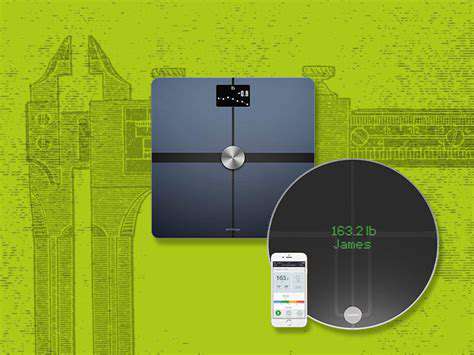

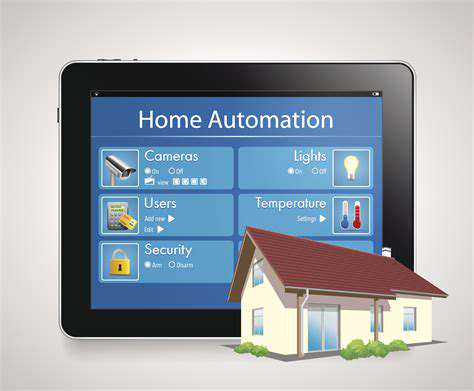
![How to Boost Your Productivity with [Specific App Name]](/static/images/25/2025-05/CollaborationandTeamManagementforEnhancedWorkflow.jpg)

